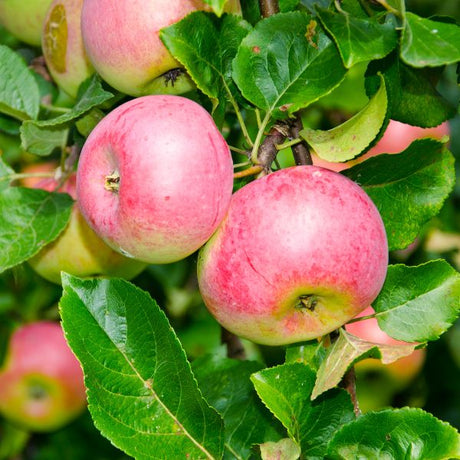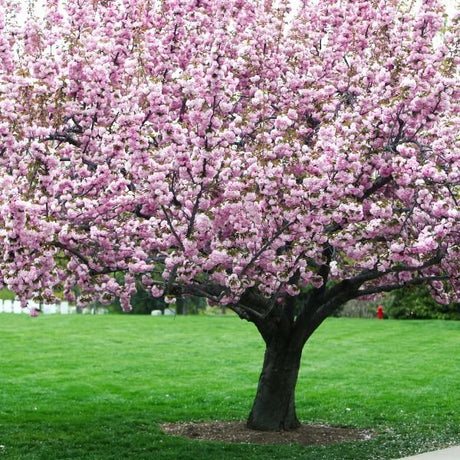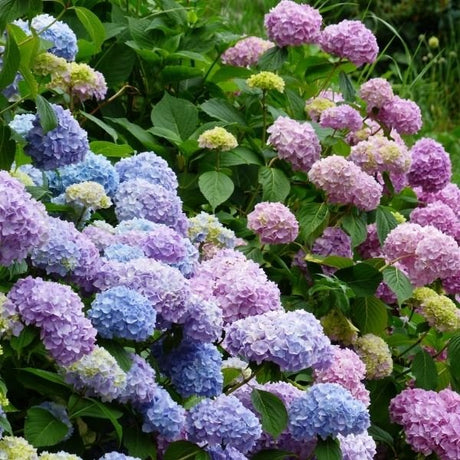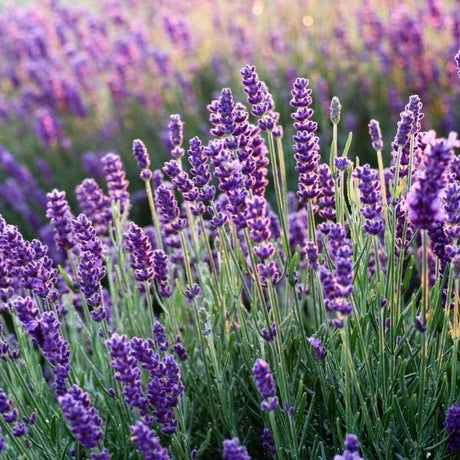Red Maple Tree
Acer rubrum
- Stay Protected with Plant Sentry ™
Red Maple Tree - #3 Container 2-3 Feet is backordered and will ship as soon as it is back in stock.
Plant Sentry™
Plant Sentry™
Plant Sentry is designed to protect both consumers and the nursery trade from invasive plant pests and diseases. Sites that display the Plant Sentry protection badge are protected from consumers buying and nurseries shipping material carrying invasive pests and diseases.
This proprietary eCommerce software prevents the shipment of a restricted plant to each state. The Plant Sentry system includes a shipment certification program. The Plant Sentry Compliance Officer works closely with NatureHills.com and each nursery or fulfillment center to ensure only compliant plants are sold to customers.
Click Here to learn more

Delivery and Shipping
Delivery and Shipping
Shipping
To obtain a more accurate shipment time-frame, simply enter your zip code in the “Find Your Growing Zone” box to the right. Our plants are grown all over the country and lead time on items may be different because of this. Once your order is placed, you will also receive the specific shipment time-frame information as part of your order confirmation. Once an item ships, you will receive shipment notification and tracking numbers, so you can follow along while your plant travels to your doorstep. We use FedEx, UPS, or USPS at our discretion.
Due to winter weather we have put a hold on shipping to the areas shown below in grey. You can still order now and we will ship the plant to you during an appropriate time for your zone.
Standard Shipping Rates
At Nature Hills we handle, package and ship the products you order with the utmost care to ensure healthy delivery. Shipping and handling charges are calculated based on the tables below. Please note that some items include an additional handling surcharge, these will be noted on the item's product page.
| From | To | S&H |
|---|---|---|
| $0 | $19.99 | $24.99 |
| $20 | $49.99 | $29.99 |
| $50 | $69.99 | $34.99 |
| $70 | $99.99 | $39.99 |
| $100 | $129.99 | $44.99 |
| $130 | $149.99 | $48.99 |
| $150 | $150+ | Approx 28% |
Click here to see our full rates
Understanding Plant Options
Nature Hills offers plants in two main formats:
- Container Plants: Grown in pots with soil, sized by container volume and plant age
- Bare Root Plants: Dormant plants without soil, sized by height measurements
Container Plant Sizes
Container sizes indicate plant age and growing capacity rather than liquid volume equivalents. Our containers follow industry-standard nursery "trade gallon" specifications, which differ from standard liquid gallon measurements.
Young Plants (6 months to 18 months old)
| Container Size | Actual Volume | Metric Equivalent |
|---|---|---|
| 2" x 2" x 3" | 0.18 - 0.21 dry quarts | 0.20 - 0.23 dry liters |
| 4" Container | 0.31 - 0.87 dry quarts | 0.35 - 0.96 dry liters |
| 4.5" Container | 0.65 dry quarts | 0.72 dry liters |
| 6" Container | 1.4 dry quarts | 1.59 dry liters |
| 1 Quart | 1 dry quart | 1.1 dry liters |
| 5.5" Container | 1.89 dry quarts | 2.08 dry liters |
Established Plants (18 months to 2.5 years old)
| Container Size | Actual Volume | Metric Equivalent |
|---|---|---|
| 2 Quart | 2 dry quarts | 2.2 dry liters |
| #1 Container | 2.26 - 3.73 dry quarts | 2.49 - 4.11 dry liters |
| 5" x 5" x 12" | 3.5 - 4.3 dry quarts | 3.85 - 4.74 dry liters |
Mature Plants (2-4 years old)
| Container Size | Actual Volume | Metric Equivalent |
|---|---|---|
| #2 Container | 1.19 - 1.76 dry gallons | 5.24 - 7.75 dry liters |
| #3 Container | 2.15 - 2.76 dry gallons | 8.14 - 12.16 dry liters |
Large Plants (3-5 years old)
| Container Size | Actual Volume | Metric Equivalent |
|---|---|---|
| #5 Container | 2.92 - 4.62 dry gallons | 12.86 - 20.35 dry liters |
| #6 Container | 5.25 - 6.01 dry gallons | 23.12 - 26.42 dry liters |
| #7 Container | 5.98 - 6.53 dry gallons | 26.34 - 28.76 dry liters |
Bare Root Plants
Bare root plants are sold by height from the root system to the top of the plant. Plants may exceed minimum height requirements.
Common Sizes:
- Trees: 1 foot, 2 feet, 3 feet, 4 feet, 5 feet, 6 feet
- Shrubs & Perennials: 1 foot, 18 inches, 2 feet
Important Notes
Container Volume Specifications
- Trade Gallon Standard: Our containers follow industry-standard "trade gallon" specifications established by the American National Standards Institute (ANSI Z60.1) for nursery stock
- Volume Variations: Actual soil volume may vary due to plant root systems and growing medium settlement
- Age Indicators: Container size primarily indicates plant age and maturity rather than liquid volume equivalents
Growing Conditions
- Plant size can vary based on variety and growing conditions
- Container size helps indicate plant maturity and establishment level
- Larger containers generally mean more established root systems and faster landscape establishment
Seasonal Availability
- Bare root plants are available seasonally when dormant
- Container plants are available throughout the growing season
- Specific varieties may have limited availability in certain sizes
Questions?
For questions about specific plant sizes or availability, please contact our plant experts who can help you choose the right size for your landscape needs.
Plant Highlights
Red Maple Tree highlights at a glance!
Specifications
Specifications
-
Brand
-
Botanical Name
-
Growing Zones
-
Mature Height
-
Mature Spread
-
Sun ExposureFull Sun
-
Moisture
-
Soil
-
Growth RateFast
-
Flower Color
-
Fall Color
-
Pollinator Friendly
-
Pollinator Required
-
Bloom PeriodEarly Spring
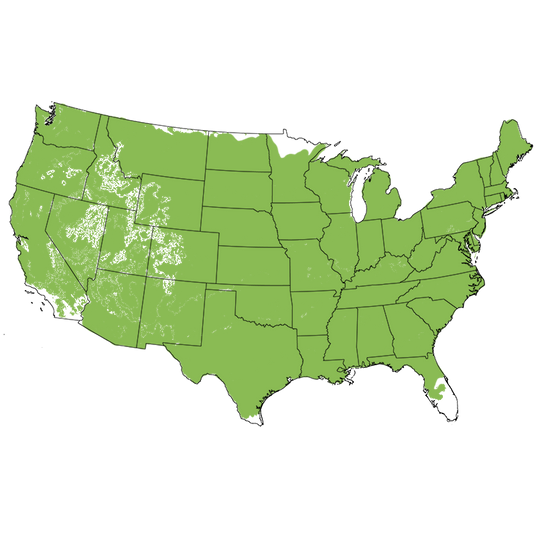
Growing Zones 4-9
Desirable Red Maple Tree Has Wonderful Fall Color
- Incredible Fall Color
- Red Blooms in Spring
- Hardy Across the United States
- Fast Growing
- Easy to Grow
- Wonderful Shade and Street Tree
- Even and Symmetrical Shape
- Well Behaved Roots
For an easy winner, select the Red Maple (Acer rubrum) to use as a shade tree in your lawn, or parading along the street or driveway. These native trees have so much going for them, you'll be very pleased with this choice.
No matter if you live in the cold winter zones of Minnesota, or the sub-tropical Florida panhandle, Red Maple will be a reliable shade tree for you. You won't have long to wait for that shade, either. Red Maples grow quickly.
Some trees require a lot of research on how to care for them. Well, not the Red Maple. It just grows in a beautifully even branch structure, and then proceeds to knock your socks off in autumn. The fall color simply has to be seen to be believed!
From year to year, and even on different branches from the same tree - you'll see the brilliant fall color range from bright scarlet red to orange-red and warm yellow. It's a beloved part of the fall season, and you'll cherish the special show your tree puts on for you.
Local wildlife appreciates this native tree. Small, pretty, early spring red flowers support critical pollinators. The leaves emerge after the red flower clusters in the spring and are yellow-green and age to dark green with a silvery underside. Wide branches provide easy shelter for birds.
Families love this tree, too. With its upright branches, it's easy to host picnics underneath it. This is the tree you all know with its furrowed, textured bark. Distinctive, lobed greens leaves provide shade all summer and develop brilliant fall foliage color.
Maybe you remember jumping around in big piles of these colorful leaves when you were a kid. What a gift to pass along to future generations.
If you're looking for a great native shade tree, you found it. Red Maple works beautifully for families and home landscapes across the United States. Order today!
How to Use Red Maple in the Landscape
Both newly built and established homes need plants to help ground them to their surroundings, and Red Maples work beautifully to do just that. Try a single tree placed in the southwest area of your lawn to give lovely shade.
Or, use several trees planted 12 to 15 feet apart (measuring from the trunk of one, to the trunk of the next) to create a lovely grove. In their native habitat, Red Maples naturally grow together in groups like this. They'll look breathtaking screening an outdoor kitchen area from the hot summer sun.
For an easy focal point, use Red Maples as an anchor in a long, curved garden bed. Depending on how much room you have, include 1, 3, 5 or 7 Red Maples along the length of your bed. It's best to plant them in a slight zig-zag for a natural look.
For a rugged look that shines all year long, add a layer of Bailey Red Twigged Dogwood shrubs, then tuck in a few well-behaved evergreen shrubs like Kallay's Compact Juniper. Punctuate the planting with several upright Karl Foerster Ornamental Grasses and the sculptural charm of Adam's Needle Yucca. Plant low Prairie Dropseed along the edge of the bed. Include tall Pine trees behind the Maples to complete the rustic, native look.
Red Maple can also be used with spring-flowering perennials. Create a grouping of Red Maples, and underplant them with drifts of Daffodil bulbs, Hosta, Bleeding Hearts, Coral Bells, Astilbe and Ferns. Don't forget to include some evergreen color like Fragrant Valley Sweet Box. What a breathtaking, fragrant and very effective display!
Because their roots are much less aggressive than Silver Maples, Red Maples also make great specimen plants for lawn or street tree plantings. Consider a row of them planted along the driveway for a homecoming welcome you won't forget.
#ProPlantTips for Care
Red Maples are relatively disease and pest free. They tolerate a wide variety of soil conditions and need regular watering.
In hot, dry climates of Zones 8 and 9, provide a 3-inch mulch cover all around the tree. Don't let the mulch directly touch the trunk.
They will tolerate a bit of shade and even periodic wet soils, if the soil drains quickly. If planting in poorly drained clay soils, consider mounding up improved topsoil 12 to 18 inches above the soil line. Plant your tree directly into that mound.
This classic landscape shade tree is native to almost all of North America, from the East Coast to Minnesota, north into Canada and south to Eastern Texas and through the southern states to Florida. They are also found native to the state of Oregon.
Typically, they are found growing in cool, moist and swampy soils. They're also known as Scarlet or Swamp Maples. As you can imagine from their nicknames, they do not naturally display drought tolerance. Rather, try them in the middle, or Mesic Zones of Rain Gardens, where they will drain faster than the Wet Zone.
Red Maple's wide range of adaptability, wonderful fall color and fast growth make it a first choice for that special place in need of shade in the landscape. That is what makes this tree so desirable. Order today!






